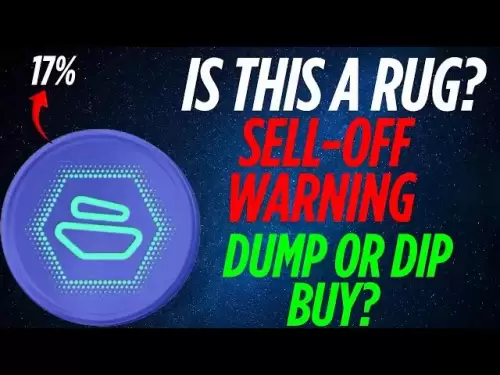-
 Bitcoin
Bitcoin $108,708.8110
0.60% -
 Ethereum
Ethereum $2,561.6057
1.91% -
 Tether USDt
Tether USDt $1.0001
-0.03% -
 XRP
XRP $2.2795
0.57% -
 BNB
BNB $662.2393
1.00% -
 Solana
Solana $153.1346
3.74% -
 USDC
USDC $1.0000
0.00% -
 TRON
TRON $0.2877
0.97% -
 Dogecoin
Dogecoin $0.1710
3.93% -
 Cardano
Cardano $0.5871
1.61% -
 Hyperliquid
Hyperliquid $39.6663
1.68% -
 Sui
Sui $2.9032
0.79% -
 Bitcoin Cash
Bitcoin Cash $496.1879
1.71% -
 Chainlink
Chainlink $13.5807
3.01% -
 UNUS SED LEO
UNUS SED LEO $9.0777
0.61% -
 Stellar
Stellar $0.2514
4.51% -
 Avalanche
Avalanche $18.1761
1.86% -
 Shiba Inu
Shiba Inu $0.0...01173
1.72% -
 Toncoin
Toncoin $2.8010
-4.23% -
 Hedera
Hedera $0.1594
3.21% -
 Litecoin
Litecoin $87.0257
-0.53% -
 Monero
Monero $319.1217
1.79% -
 Polkadot
Polkadot $3.3853
0.68% -
 Dai
Dai $0.9999
-0.01% -
 Ethena USDe
Ethena USDe $1.0003
0.02% -
 Bitget Token
Bitget Token $4.3420
-0.97% -
 Uniswap
Uniswap $7.3772
1.39% -
 Aave
Aave $286.6277
5.61% -
 Pepe
Pepe $0.0...09994
2.33% -
 Pi
Pi $0.4589
1.76%
How to ensure the address is correct when transferring money in Ethereum wallet?
Sending ETH to the wrong address is irreversible; meticulously verify the recipient's address manually, via QR code, and by cross-referencing, utilizing wallet features and testnets to minimize risk.
Mar 23, 2025 at 04:43 pm
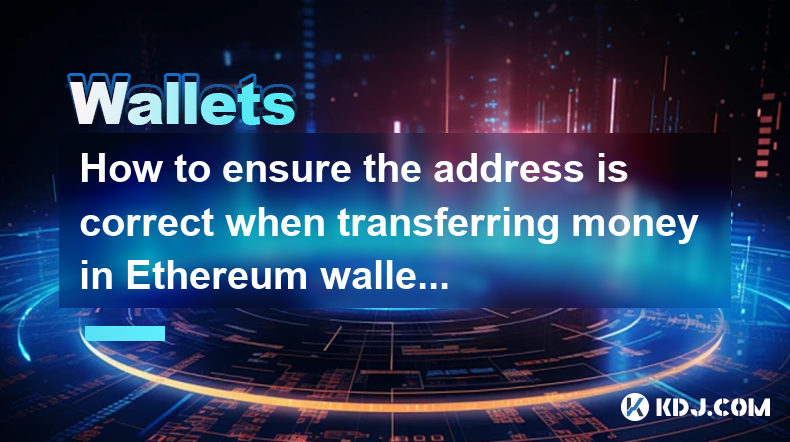
How to Ensure the Address is Correct When Transferring Money in an Ethereum Wallet
Transferring funds in the Ethereum network requires meticulous attention to detail, especially when it comes to the recipient's address. A single misplaced character can lead to irreversible loss of funds. This article outlines several methods to ensure accuracy and minimize the risk of sending ETH or ERC-20 tokens to the wrong address.
Verifying the Ethereum Address Manually:
Manually checking the address is the first line of defense. Carefully compare the address you're sending to with the address provided by the recipient. Pay close attention to each character, as even a single difference will send your funds to the wrong location. Use a text editor or notepad to facilitate this comparison, line by line if necessary.
Utilizing QR Codes:
Many wallets support QR code scanning. If the recipient provides a QR code, scan it using your wallet's built-in scanner. This method is generally faster and less prone to typos than manual entry. However, always double-check the address displayed after scanning to ensure accuracy. Be wary of QR codes from untrusted sources.
Cross-Referencing Addresses:
Before initiating the transfer, cross-reference the address in multiple ways. If possible, ask the recipient to provide the address through a different communication channel, such as email or a secure messaging app. This helps eliminate potential errors or scams involving manipulated addresses.
Using Multiple Address Verification Methods:
Employing multiple verification techniques is crucial. Combine manual checking with QR code scanning and cross-referencing. This layered approach significantly reduces the probability of sending your funds to an incorrect address. It’s better to be overly cautious than to suffer irreversible loss.
Leveraging Wallet Features:
Many Ethereum wallets include built-in features designed to prevent address errors. Some wallets highlight potential inconsistencies or typos as you type, while others offer address validation before confirming the transaction. Familiarize yourself with your wallet's features to take advantage of these safeguards.
Understanding Address Formats:
Ethereum addresses follow a specific format, typically starting with "0x" followed by 40 hexadecimal characters (0-9 and a-f). Understanding this format helps in identifying potential errors during manual verification. Any deviation from this format is an immediate red flag.
Double-Checking Transaction Details:
Before confirming the transaction, meticulously review all transaction details displayed by your wallet. This includes the recipient's address, the amount of ETH or tokens being transferred, and the transaction fee. Any discrepancy should prompt you to cancel the transaction and re-check everything.
Utilizing a Testnet:
Before transferring significant amounts of ETH, consider using a testnet to simulate the transaction. Testnets are parallel networks that use test tokens instead of real ETH. This allows you to practice sending and receiving tokens without risking actual funds. This is especially beneficial for new users.
Taking Screenshots for Record-Keeping:
After initiating a transaction, take a screenshot of the confirmation screen. This serves as crucial evidence in case of any discrepancies or disputes. The screenshot should clearly show the transaction ID, the recipient's address, and the amount transferred. This is a vital step for accountability.
Seeking Help When Unsure:
If you are unsure about the recipient's address or encounter any difficulties during the transfer process, do not hesitate to seek assistance from the wallet's support team or the cryptocurrency community. It’s always better to ask for help than to risk losing your funds.
The Importance of Security Practices:
Strong security practices are paramount to protect your Ethereum assets. This includes using a strong password, enabling two-factor authentication (2FA), and storing your private keys securely. These measures protect your wallet from unauthorized access, which can lead to loss of funds even with a correct address.
Common Questions:
Q: What happens if I send ETH to the wrong address?
A: Sending ETH to the wrong address is typically irreversible. The funds are lost and cannot be retrieved unless the recipient cooperates in returning them.
Q: Can I recover ETH sent to the wrong address?
A: Recovery is extremely difficult and often impossible. It depends on the recipient's cooperation and the specific circumstances.
Q: How can I avoid sending ETH to the wrong address?
A: Carefully verify the address using multiple methods, including manual checking, QR code scanning, and cross-referencing. Utilize your wallet's built-in features and testnet for practice.
Q: What should I do if I suspect I've sent ETH to the wrong address?
A: Immediately contact the recipient (if possible) and the support team of your wallet provider. Document everything with screenshots.
Q: Are there any services that can recover lost ETH?
A: There are no guaranteed services that can recover ETH sent to the wrong address. Claims of such services should be treated with extreme skepticism.
Q: How can I be sure the QR code is legitimate?
A: Only scan QR codes from trusted sources. Verify the address displayed after scanning against the address provided through another channel. Be wary of unsolicited QR codes.
Q: What is a testnet, and why should I use it?
A: A testnet is a replica of the Ethereum mainnet, allowing you to practice transactions with test tokens without risking real funds. It's a safe environment to learn and test before using real ETH.
Disclaimer:info@kdj.com
The information provided is not trading advice. kdj.com does not assume any responsibility for any investments made based on the information provided in this article. Cryptocurrencies are highly volatile and it is highly recommended that you invest with caution after thorough research!
If you believe that the content used on this website infringes your copyright, please contact us immediately (info@kdj.com) and we will delete it promptly.
- Ripple, XRP, and AI Tokens: Is Ruvi AI the Next Big Thing?
- 2025-07-08 05:30:12
- Crypto Investment: BlockDAG, Litecoin, and the Solana Meme Coin Mania
- 2025-07-08 06:10:12
- Altcoins in Focus: BlockDAG, Litecoin, and the Shifting Crypto Landscape
- 2025-07-08 05:35:12
- BNB's Bullish Breakout: Riding the $600 Support Level Wave
- 2025-07-08 04:55:13
- Solana ETF on Hold: SEC Delay and Crypto Regulation Scrutiny
- 2025-07-08 06:10:12
- Altcoin, Date, Price: Navigating the Crypto Bill & Meme Coin Mania
- 2025-07-08 06:15:12
Related knowledge
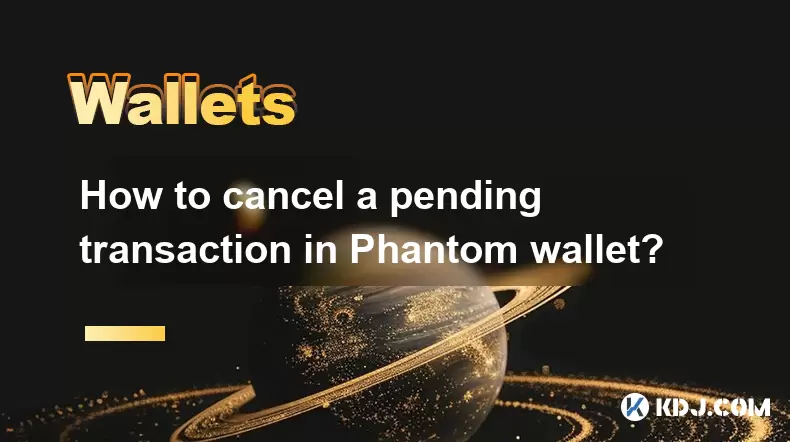
How to cancel a pending transaction in Phantom wallet?
Jul 03,2025 at 07:21pm
Understanding Pending Transactions in Phantom WalletA pending transaction in the Phantom wallet occurs when a user initiates a transfer or interaction with the Solana blockchain, but it hasn't yet been confirmed by the network. This can happen due to various reasons such as low transaction fees, network congestion, or incorrect gas settings. It's import...
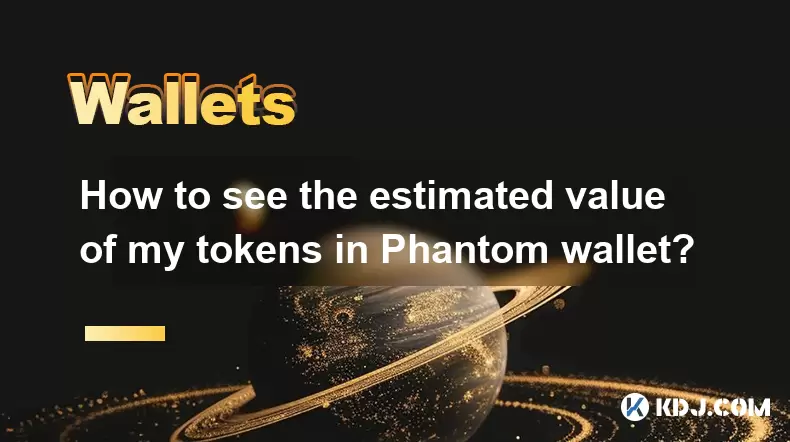
How to see the estimated value of my tokens in Phantom wallet?
Jul 04,2025 at 12:21am
What is Phantom Wallet?Phantom wallet is one of the most popular cryptocurrency wallets designed for the Solana blockchain. It allows users to store, send, receive, and manage various tokens built on Solana, including SPL tokens and NFTs. The wallet offers a user-friendly interface, making it accessible for both beginners and advanced users in the crypt...
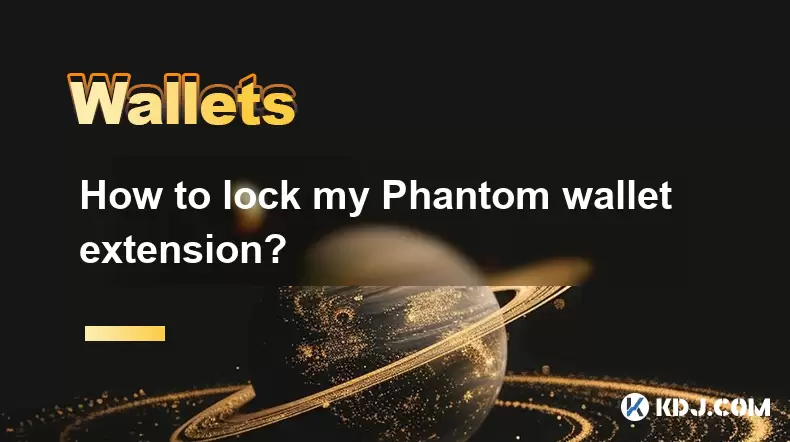
How to lock my Phantom wallet extension?
Jul 03,2025 at 11:14am
What Is the Phantom Wallet and Why Lock It?The Phantom wallet is a popular non-custodial cryptocurrency wallet designed for interacting with the Solana blockchain. Supporting both browser extensions and mobile apps, Phantom allows users to store, send, receive, and stake SOL tokens, as well as interact with decentralized applications (dApps). Securing y...

Does Phantom wallet offer two-factor authentication (2FA)?
Jul 03,2025 at 09:00am
Understanding Phantom Wallet and Its Security FeaturesPhantom wallet is a widely used non-custodial cryptocurrency wallet that supports the Solana blockchain. It allows users to store, send, receive, and interact with decentralized applications (dApps) seamlessly. As security is a top priority for any crypto wallet user, security features like two-facto...
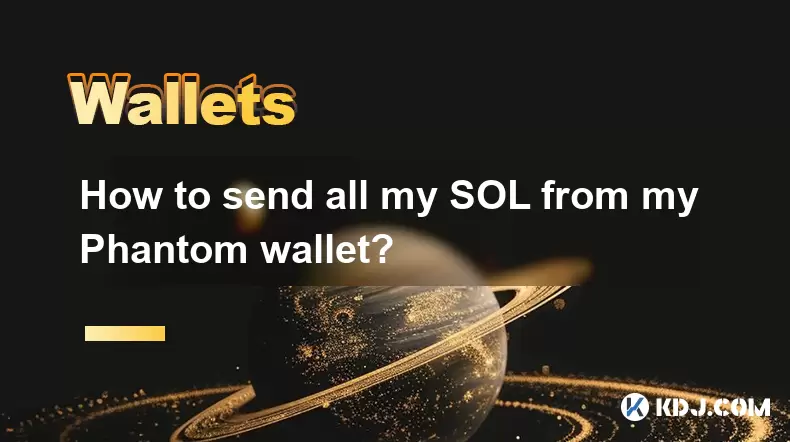
How to send all my SOL from my Phantom wallet?
Jul 06,2025 at 10:00am
Preparing to Send SOL from Your Phantom WalletBefore initiating any transaction, it is crucial to ensure that your Phantom wallet is fully set up and connected to the correct network. Phantom supports multiple networks, but for sending SOL, you must be on the Solana blockchain. Confirm this by checking the network indicator in the top-right corner of th...
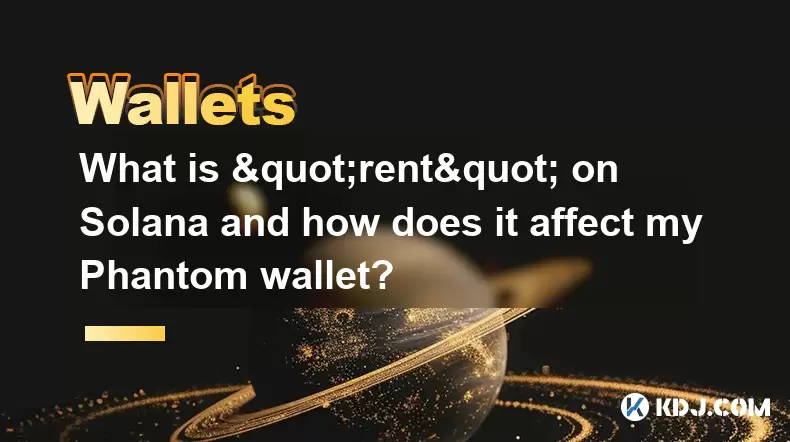
What is "rent" on Solana and how does it affect my Phantom wallet?
Jul 02,2025 at 08:35pm
Understanding 'Rent' on SolanaIn the context of Solana, the term 'rent' refers to a storage fee that users pay for maintaining data on the blockchain. Unlike Ethereum, where storage costs are paid once via gas fees during contract deployment, Solana implements a recurring cost model to ensure efficient usage of network resources. This means that any acc...

How to cancel a pending transaction in Phantom wallet?
Jul 03,2025 at 07:21pm
Understanding Pending Transactions in Phantom WalletA pending transaction in the Phantom wallet occurs when a user initiates a transfer or interaction with the Solana blockchain, but it hasn't yet been confirmed by the network. This can happen due to various reasons such as low transaction fees, network congestion, or incorrect gas settings. It's import...

How to see the estimated value of my tokens in Phantom wallet?
Jul 04,2025 at 12:21am
What is Phantom Wallet?Phantom wallet is one of the most popular cryptocurrency wallets designed for the Solana blockchain. It allows users to store, send, receive, and manage various tokens built on Solana, including SPL tokens and NFTs. The wallet offers a user-friendly interface, making it accessible for both beginners and advanced users in the crypt...

How to lock my Phantom wallet extension?
Jul 03,2025 at 11:14am
What Is the Phantom Wallet and Why Lock It?The Phantom wallet is a popular non-custodial cryptocurrency wallet designed for interacting with the Solana blockchain. Supporting both browser extensions and mobile apps, Phantom allows users to store, send, receive, and stake SOL tokens, as well as interact with decentralized applications (dApps). Securing y...

Does Phantom wallet offer two-factor authentication (2FA)?
Jul 03,2025 at 09:00am
Understanding Phantom Wallet and Its Security FeaturesPhantom wallet is a widely used non-custodial cryptocurrency wallet that supports the Solana blockchain. It allows users to store, send, receive, and interact with decentralized applications (dApps) seamlessly. As security is a top priority for any crypto wallet user, security features like two-facto...

How to send all my SOL from my Phantom wallet?
Jul 06,2025 at 10:00am
Preparing to Send SOL from Your Phantom WalletBefore initiating any transaction, it is crucial to ensure that your Phantom wallet is fully set up and connected to the correct network. Phantom supports multiple networks, but for sending SOL, you must be on the Solana blockchain. Confirm this by checking the network indicator in the top-right corner of th...

What is "rent" on Solana and how does it affect my Phantom wallet?
Jul 02,2025 at 08:35pm
Understanding 'Rent' on SolanaIn the context of Solana, the term 'rent' refers to a storage fee that users pay for maintaining data on the blockchain. Unlike Ethereum, where storage costs are paid once via gas fees during contract deployment, Solana implements a recurring cost model to ensure efficient usage of network resources. This means that any acc...
See all articles

























